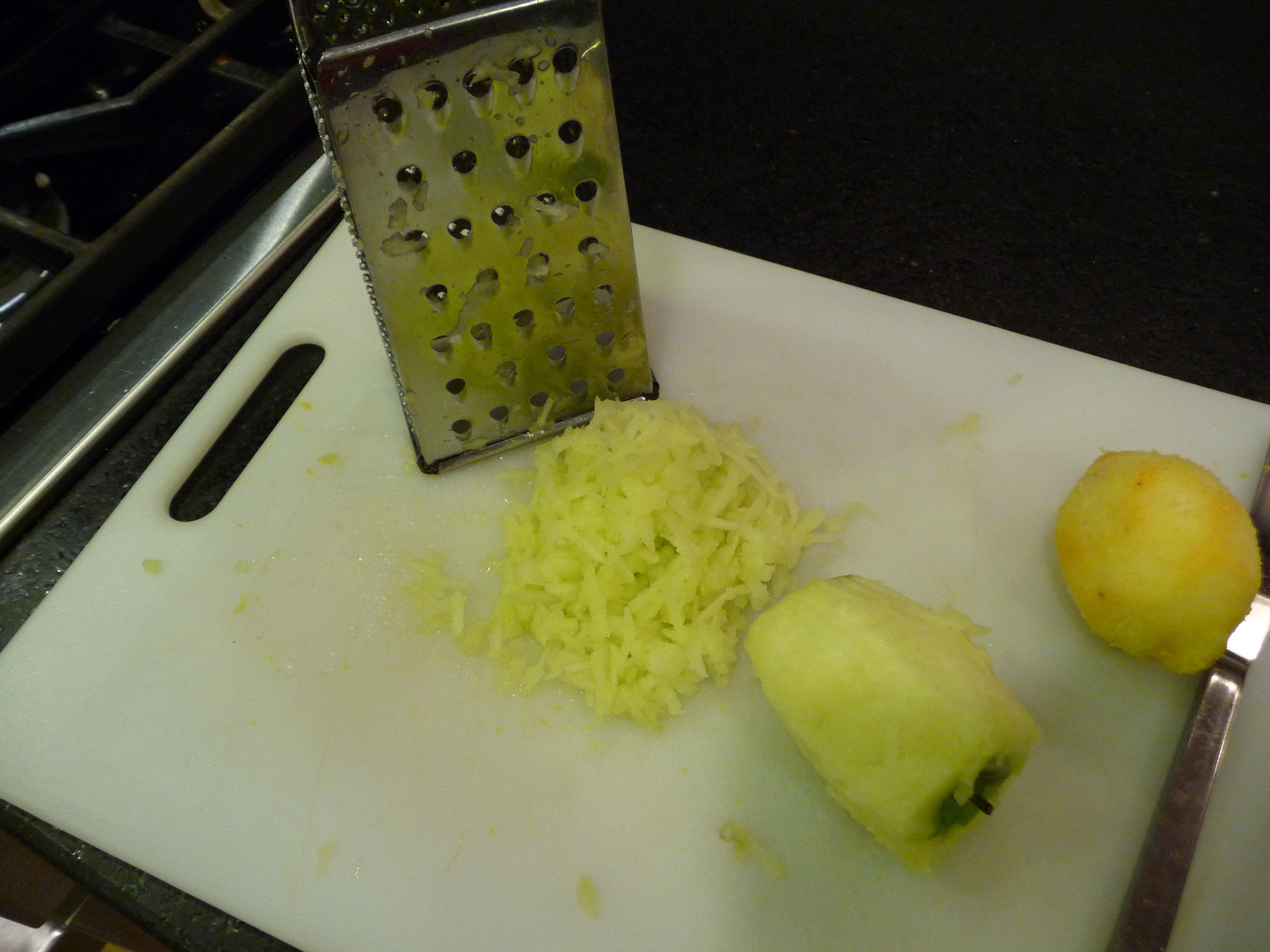99.9% of the time, when I make a pie, I use a ready-made frozen pie crust. And no shame. But about once a year, usually in summer, I get the urge to make pie from scratch, including the crust. Pie crust and I do not get along. And I have very high standards: I grew up on my mother's gorgeous, lattice-topped cherry pies which she made for holiday dessert and for my brother's birthdays. I make a so-so cherry pie (Billy Boy, Billy Boy). My signature pie is blueberry, and I owe that to Cook's Illustrated.
Cook's Illustrated is a nifty magazine. It doesn't really teach you any new recipes, it just takes tried-and-true favorites and makes them even better. It teaches you tricks. They dig into the science of cooking to discover how to make roast chicken better, how to produce juicy pork chops, which methods make the best brownies, and so forth. And if you are interested in the science, you can read the whole article, but if you want to cut to the chase you can just jump right to the recipe. But it is interesting knowing why what you're doing works.
Their blueberry pie works by using a grated apple as a thickener. What's the usual problem with berry pies? The filling never thickens properly, it runs out all over and makes your crust soggy. Or too much flour and/or tapioca leaves the filling gluey. With the CI method, the natural pectin in an apple helps the berry filling gel, and with only a small amount of additional tapioca, the pie turns out perfect every time. You slice it and the filling holds. Every time.
Whether you use ready-made crust, or try CI's foolproof pie dough, which is made with vodka, you will have a signature blueberry pie that will knock 'em dead. Every time.
But full disclosure: pie crust and I, whatever the method, do not get along. I don't get no points for presentation. Which is why I only make it from scratch once a year or so. And you will see why shortly. But at least I know that with the vodka method, the crust might look like crap, but it will always taste good.
Signature Blueberry Pie
- 6 cups (about 3 pints) fresh blueberries (unthawed frozen ones will work just as well)
- 1 granny smith apple, peeled and grated on large holes of box grater
- Zest and juice of one lemon
- 3/4 cup sugar
- 2 tbsp instant tapioca, ground (their directions say to grind it in a spice mill or small food processor. I only have my large processor and if it's currently thrown in the sink after I've made pie crust, I am not keen to wash, dry, and assemble it to grind tapioca. So I put the tapioca in a ziplock bag and roll over it with the rolling pin until it's reasonably crushed. Don't sweat it)
- 1 pinch salt
- 2 tbsp unsalted butter, cut in 1/4" pieces
- Pie crust of your choice
Step One (I hate this step): Take 1 disk of pie-crust and roll out on generously-floured surface. Roll to 12" circle, about 1/8" thick. Roll dough loosely around rolling pin and unroll into pie plate, leaving at least 1" overhang on each side.
Ha.
This is what I'm left with after following Step One:
Fabulous. That's what happens every time. And I have to resort to what I call the "Patch and Pray" method. No finesse whatsoever, the bottom crust is just completely fudged, jerry-rigged, held together with cursing and philosophy. So you do your own treatment, get the crust in there, put the pie plate back in the fridge and let's just forget it ever happened.
Adjust the oven rack to lowest position; place rimmed baking sheet on rack and heat oven to 400.
Grate the apple, set aside; grind or pound the tapioca, set aside.
Place 3 cups berries in saucepan and set over medium heat. Using potato masher, mash berries several times to release juices. Continue to cook, stirring and mashing occasionally, until about half of berries have broken down and mixture is thickened and reduced to 1 1/2 cups, about 8 minutes. Remove from heat and let cool.
Place grated apple in kitchen towel and wring dry (or just squeeze it out with your hands, that's what I do). Transfer apple to a large bowl. Add cooked berries, remaining 3 cups fresh berries, lemon zest, lemon juice, sugar, tapioca and salt. Toss to combine. Transfer mixture to dough-lined pie plate and scatter butter pieces over filling.
Roll out second disk of dough. You can either do a full double-crust and cut slits to let the pie vent. Or you can do a lattice top. I belong to some kind of religion that mandates berry pies to have lattice tops. Cut the dough into strips and assemble your lattice. My mother does this beautifully. Her lattice actually weaves. I just lay strips out one way, and then lay them across the other. I'm just trying to get through it, OK?
By the way, do not talk to me about crimping or fluting. I am missing that chromosome entirely. The edge of my pie is what it is.
Place pie on heated baking sheet and bake 30 minutes.
Clean up the unholy mess that is your kitchen counter:
After 30 minutes, reduce heat to 350. If pie edges are becoming too browned, cover with foil. Bake another 30 minutes at 350.
Remove from oven. Place on wire rack, or on windowsill, or on attractive curved ledge of your kitchen window pass-through, which your architect so thoughtfully designed for the express purpose of cooling a pie thereupon. Let cool completely, at least 4 hours.
Slice.
Serve.
Die.
You can see from the quarter of the pie that's left how nicely it holds. It's a beautiful pie. You did a great job.














